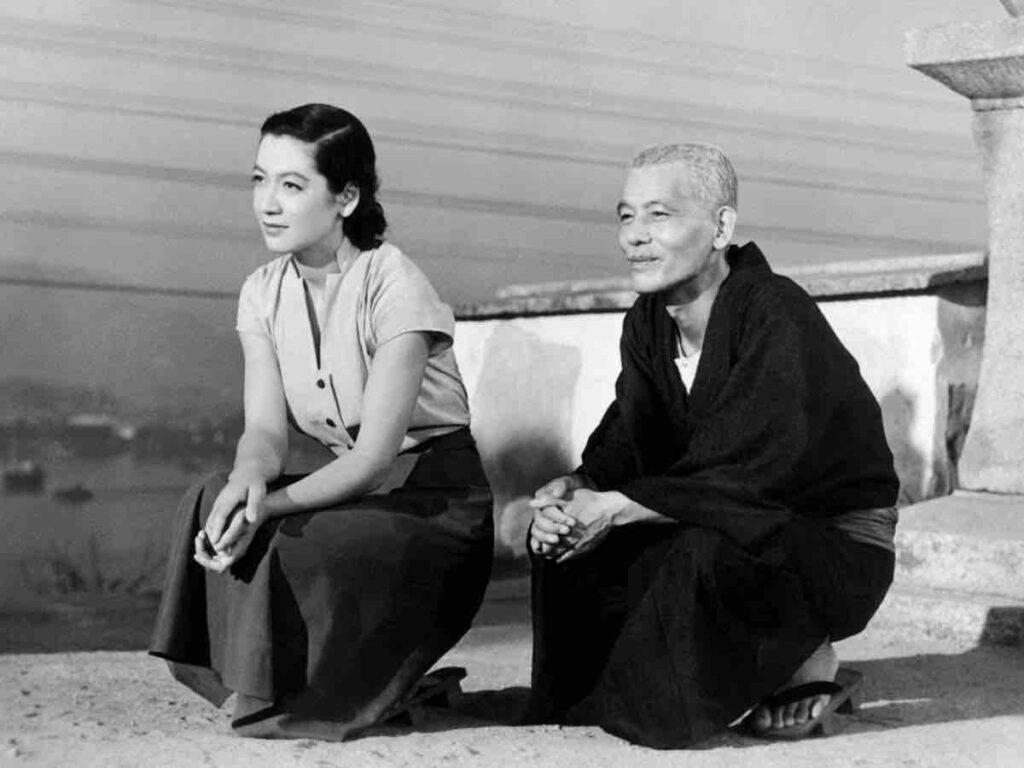From An Autumn Afternoon (1962) to Floating Weeds (1959), these are the best Yasujirō Ozu films.
Legendary Japanese auteur Yasujirō Ozu is one of the most distinctive filmmakers in the history of the medium. His visual style is instantly recognizable; stationary, static camera capturing characters from low-angle and still-life shots (simply addressed as ‘pillow shots’ by film critic Noel Burch).
Ozu developed an interest in cinema during high school years. Then, in 1923, at 20, he found work at Japan’s prestigious Shochiku Film Company as an assistant cameraman. His work was largely restricted to carrying heavy camera equipment. Gradually, though, he was promoted to third assistant director. Fast-forward to 1927. Ozu got the chance to direct his first movie, Sword of Penitence. He co-wrote the script with his frequent collaborator Kogo Nada. It was a Jidaigeki film (period drama). But, before finishing the movie, Ozu got drafted.
In 1928, he returned from the military and resumed filmmaking, directing mostly slapstick comedies. Charlie Chaplin and Harold Lloyd’s works heavily influenced these films. Soon, Ozu used the comedic setup to offer his commentary on the era’s socioeconomic problems. It was the time of the Great Depression, and Ozu’s films like Tokyo Chorus (1931) and Where Now are Dreams of the Youth? (1932) reflected the rampant unemployment in Japan.
His first commercial success came with I Was Born, But… (1932). Later, with films like An Inn in Tokyo (1935) and his first talkie, My Only Son (1936), the director developed the austere yet playful visual style for which he is revered. Critics and scholars consider his post-war cinema, including Late Spring (1949) and Tokyo Story (1953), as his most mature phase of filmmaking. His remarkable consistency was also made possible due to the loyal and trusted team of technicians and actors — from screenwriter Kogo Nada and cinematographer Yuharu Atsuta to actors Chishu Ryu, Haruko Sugimura, and Setsuko Hara.
Understanding the beauty of his elliptical narratives and stylistic idiosyncrasies is not an easy task. Yet to understand and appreciate the master filmmaker’s works, I believe these 15 films are essential.
WATCH: 10 Greatest Yasujiro Ozu Films, Ranked
Best Yasujirō Ozu Movies
15. There Was A Father (1942)

Chishu Ryu appeared in almost all Yasujiro Ozu movies. In Ozu’s silent cinema, Ryu appeared in bit-parts. Then he was asked to play an old man in Ozu’s first talkie, The Only Son. Ryu was only 32 when he played this role. Later, till Ozu’s final movie, An Autumn Afternoon (1962), Ryu was often cast as an old benevolent patriarch. Noteworthy, Ryu got his first leading role in an Ozu movie in There Was A Father. He plays the titular father, Shuhei, who is a widowed school teacher.
The narrative follows Shuhei’s relationship with his son Ryohei over 15 years. Circumstances don’t allow the father and son to spend time together. Shuhei loses interest in teaching and becomes a factory worker. Hence, Ryohei is enrolled in a boarding school. In the end, though they stay in different places even after Ryohei settles down in a fine job, their bond remains strong. Note, since the movie was made during wartime Japan, it has some propaganda messages.
14. Record of a Tenement Gentleman (1947)
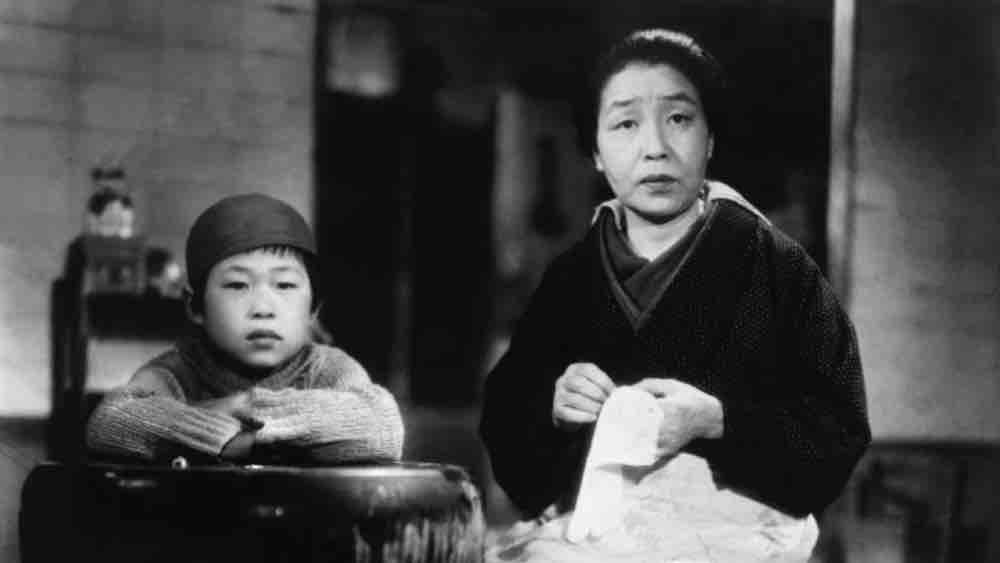
This was Ozu’s first film after World War II ended. It’s set in the impoverished quarters of Tokyo and revolves around a boy who’d been abandoned. But the filmmaker looks at people’s lives with great compassion and sympathy. He doesn’t solely define his characters through their poverty. Despite being a tale of a lost boy, the director doesn’t unnecessarily dramatize the scenario.
A grumpy old woman, Otane reluctantly takes in the boy, Kohei. Since Otane lives alone and supports herself with a tenement shop, her neighbors force her to take care of Kohei temporarily. Gradually, Otane warms up to the boy and feels saddened about his abandonment. Kohei, however, assures that he wasn’t abandoned but only got lost. It all leads to a tear-jerking climax. Ozu’s portrayal of altruism and humanism in post-war poor communities is deeply moving. He combines low-key drama with dazzling mise-en-scène.
13. Good Morning (1959)
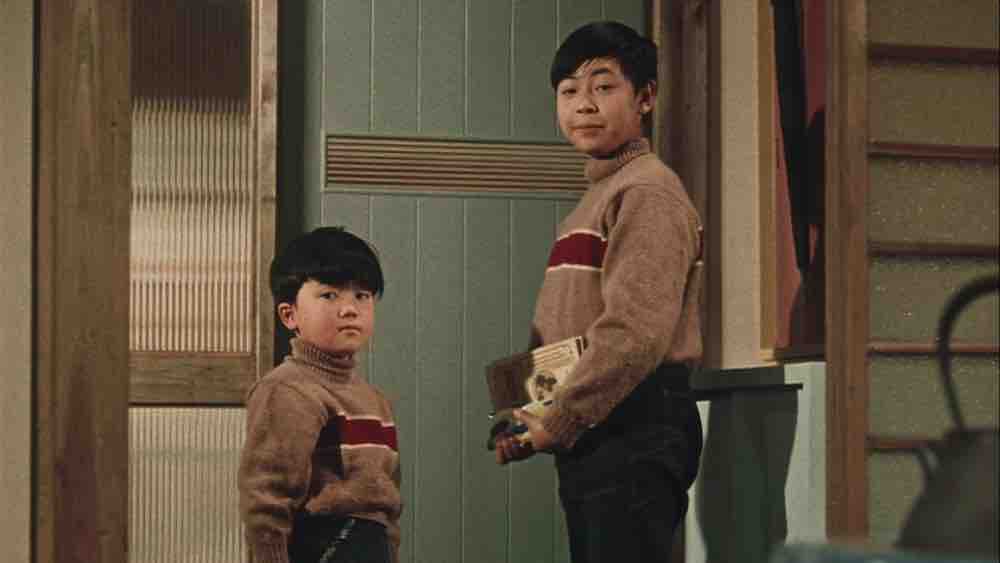
Ohayo, aka Good Morning, is perhaps the most accessible and feel-good Japanese movie in the director’s oeuvre. Ozu devotees might also call it his least complicated movie. Written by Ozu and his frequent collaborator Kogo Nada, Good Morning is loosely based on Ozu’s silent comedy classic I Was Born, But… (1932). Set in a cozy, small suburban town, the narrative partly follows the quiet rebellion of the Hayashi family’s two young brothers, Minoru and Isamu. Both the boys are rebuked by their parents for spending free time watching Sumo wrestling on the neighbors’ television. And so, they decide to rebel in various ways.
Another plotline involves Mrs. Hayashi getting caught up in the mystery of misplaced cash. Chishu Ryu plays Mr. Hayashi, who contemplates his job as a salaryman and his eventual retirement. Apart from the Hayashi family, we also observe different people in the community.
A warm slice-of-life drama, Good Morning carries Ozu’s profound outlook on life and the human condition.
12. Flavor of Green Tea Over Rice (1952)

A gentle and under-appreciated domestic drama, it revolves around childless middle-class couples, Mokichi (Shin Saburi) and Taeko (Michiyo Kogure). Their marriage has reached a phase that is defined by lies and petty squabbles. Taeko finds her husband to be a dull salaryman who sneaks out to the pachinko parlor. She addresses him as ‘Mr. Bonehead’ to her friends. Soon, Taeko along with her niece, Setsuko – who is reluctant about the arranged marriage – goes on a spa trip with her pals.
The filmmaker uses the couple’s conflicts and Setsuko’s perspective to reflect on the pros and cons of modern married relationships. Yasujiro Ozu and Kogo Nada never create uni-dimensional characters. We can relate to their characters’ multifaceted emotions: from feelings of frustration and contempt to hope and compassion. The director beautifully stages the couple’s eventual reconciliation. He ends the movie on a tender note, with Mokichi and Taeko enjoying life’s simple pleasures.
11. The Only Son (1936)
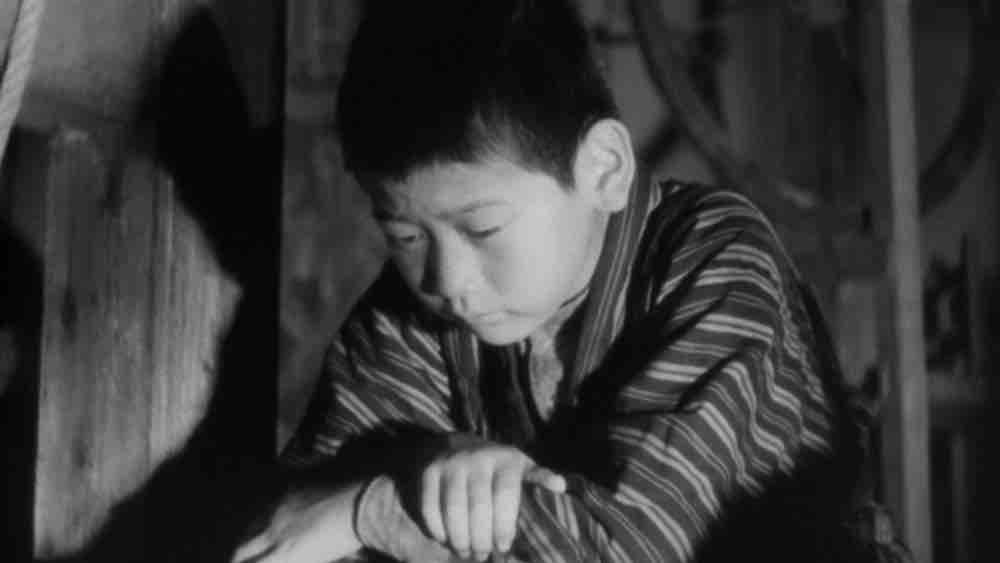
This gorgeously shot mother-son relationship drama was Ozu’s first talkie. The transition Ozu is making from silent cinema to talkies is evident as many scenes in the narrative are shot in the style of silent movies. In The Only Son, widowed mother O-Tsune from rural Shinshu sends her boy Ryosuke to Tokyo to continue his studies. She works hard to provide for his education. Years later, she makes her first visit to Tokyo.
The mother is disappointed that her son works part-time as a night-school teacher and lives in a slum. Moreover, she discovers that he is married and has a baby. The narrative chronicles the mother’s conflicting emotions while documenting the era’s social and economic problems. Ozu’s austere yet poetic visuals drive this lower middle-class family portrait. It was one of the films, where he fully mastered his unique mise-en-scène. His serene ‘pillow shots’ elevate the episodic narrative.
1o. I Was Born, But… (1932)
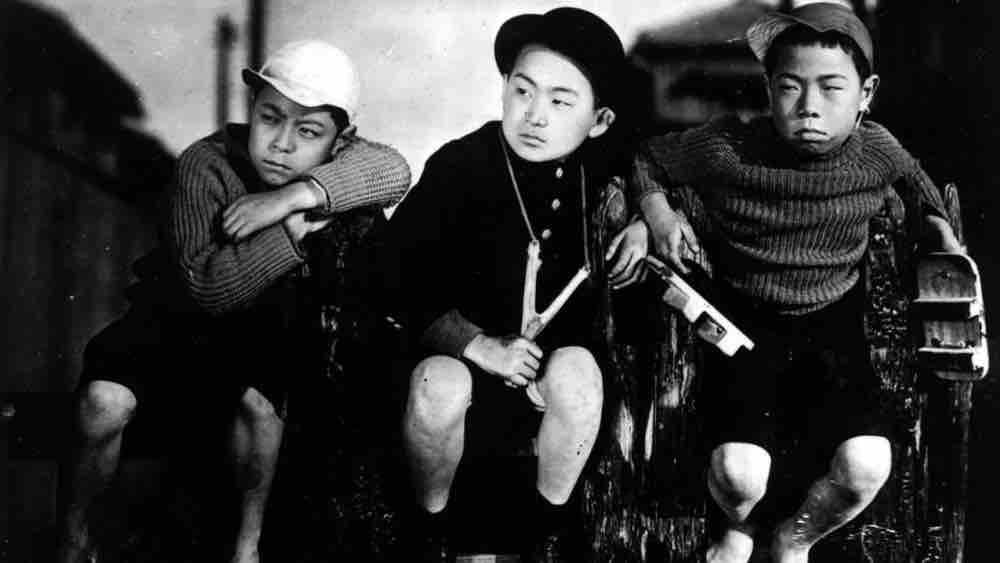
Shoshimin eiga, aka Shomin-geki, is a popular movie genre in the 1930s, which portrayed the everyday life of the Japanese urban middle class. Yasujiro Shimazu, Yasujiro Ozu, and Mikio Naruse were prominent filmmakers of the era. While the 1930s saw a resurgence of Japan’s military aggression, the country’s march towards modernity continued apace. The director made subtle social satires that showcased the changes in society. I Was Born, But…. was his most accomplished silent movie and one of his best comedies.
The movie revolves around a family of four – mom, dad, and two little boys – who move to a new Tokyo suburb because of their father’s transfer. It follows the boys’ daily struggles as they try to navigate through a new school and bullies. The kids’ comedic timing is absolutely brilliant. The director’s trademark formalism of low camera positioning was gradually emerging in this work. Although he adopted static shots in his later-era films, this movie also has some fascinating tracking shots.
9. Equinox Flower (1958)
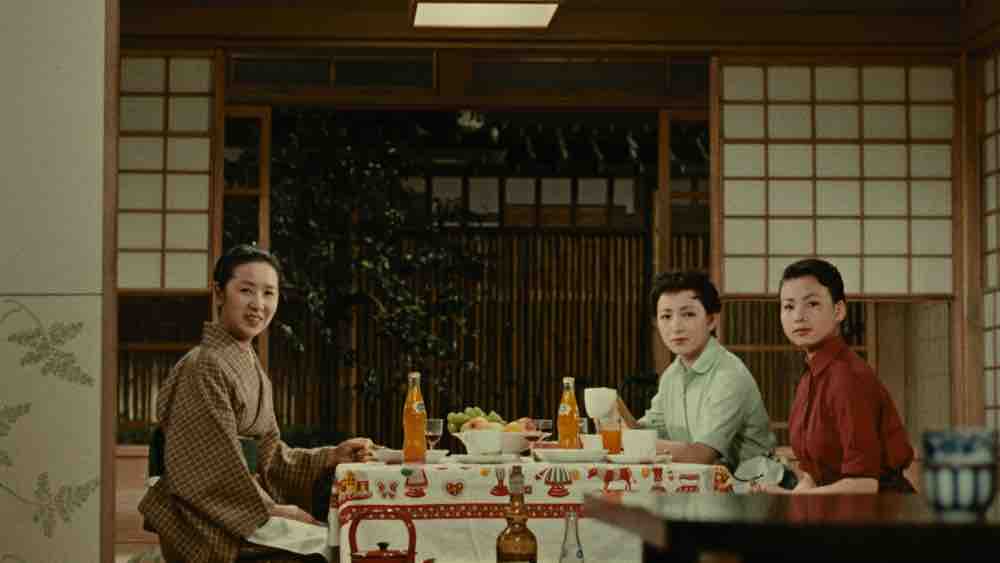
From the despair-filled streets of Tokyo downtown in Tokyo Twilight, Ozu moves to the relatively luxurious domestic spaces of a bourgeoisie family in Equinox Flower. Most importantly, this was Ozu’s first color movie. Just like his transition from silent cinema to talkies, Ozu’s transition from black-and-white to color was also slow. However, the six color films Ozu made, including Equinox Flower, offer a rich tapestry of colors and gorgeous landscapes. Ozu and Kogo Nada’s script more or less follows a similar pattern of marriage drama.
The tension largely comes from the traditional father, Hirayama’s objection to his Westernized daughter, and Setsuko’s love marriage. Important note, seasons are an important motif in Ozu films. Here, Ozu uses the fall season to signify the older generations’ need to change their conservative ways and embrace post-war Japan’s cultural and social changes. And as usual, we empathize with Hirayama, though we don’t always agree with him.
Stylistically, all of Ozu’s trademarks are in Equinox Flower, and who can forget that bright red teapot?
8. Early Spring (1956)
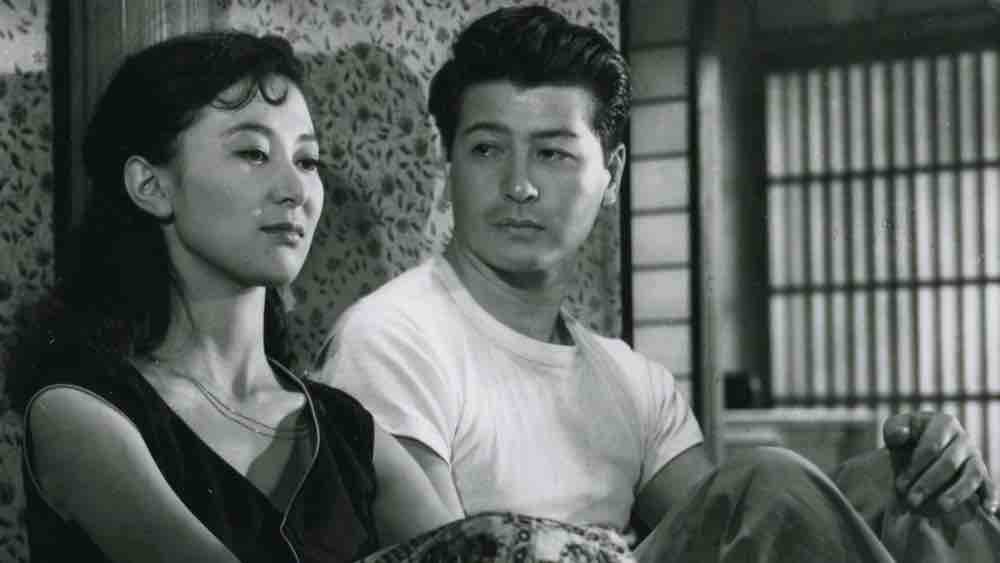
The director followed up Tokyo Story with a different story of a contemporary younger generation couple. What’s more intriguing about Early Spring is that it deals with the theme of infidelity. The narrative revolves around salaryman Shoji Sugiyama (Ryo Ikebe), whose relationship with his wife, Masako (Chikage Awashima), has gradually gone stale. The couple lost their son a few years ago. Then, during a hike with colleagues, Shoji freely talks with the young typist, nicknamed, Goldfish (Keiko Kishi), which leads to an extra-marital affair.
The filmmaker brilliantly portrays the struggles and frustrations of being a salaryman in post-war Japan. Simultaneously, the filmmaker observes how Shoji’s discontent makes him hurt the people around him. Keiko’s character is also portrayed with sensitivity. In films like Late Spring or Early Summer, Ozu portrayed the opportunities post-war society brought to its young people. However, in Early Spring, he observes how the mundane life of a salaryman has turned into a rat race.
7. Late Autumn (1960)
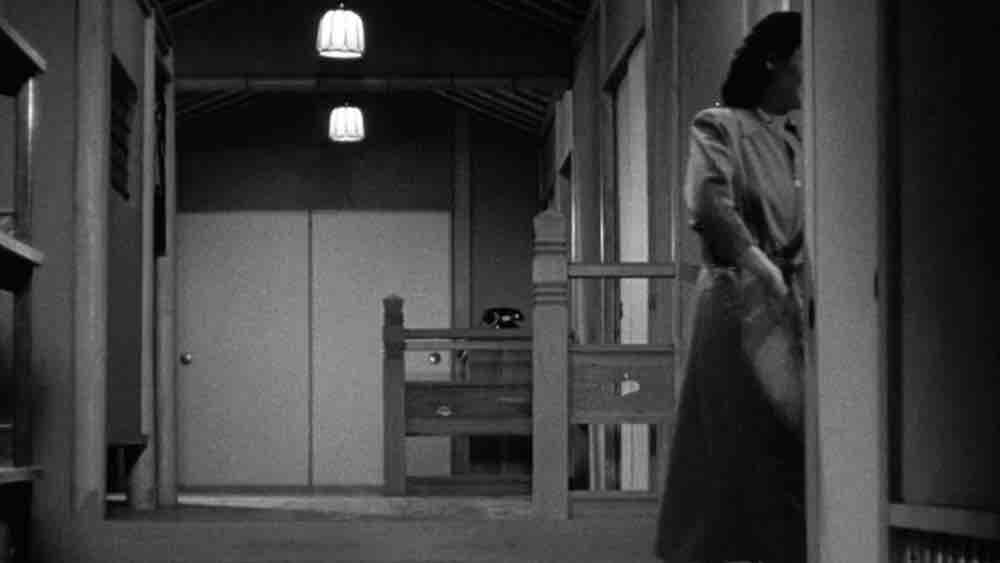
Adapting Ton Satomi’s novel, Ozu returns to his favorite theme of marriage and the generational gap. But what I particularly love about Late Autumn is his sense of humor. The incredible Setsuko Hara, who played the unmarried Noriko in Late Spring, plays the widow Akiko. She hopes to arrange the marriage for her 24-year-old old daughter Ayako (Yoko Tsukasa). The movie opens with the memorial service of Akiko’s husband, who passed away seven years ago. Three of the dead man’s long-time friends are all present at the service.
Akiko seeks their help for her daughter’s matchmaking. What follows is a series of bittersweet interactions and conflicts, where Ozu, in his usual gentle manner, observes the dichotomy of traditional and modern sensibilities. I particularly love Mariko Okada’s character of Yuriko. She plays Ayako’s free-spirited friend and colleague. Eventually, Ozu notes down the welcome cracks in the patriarchal society and demonstrates how change is inevitable.
6. Floating Weeds (1959)
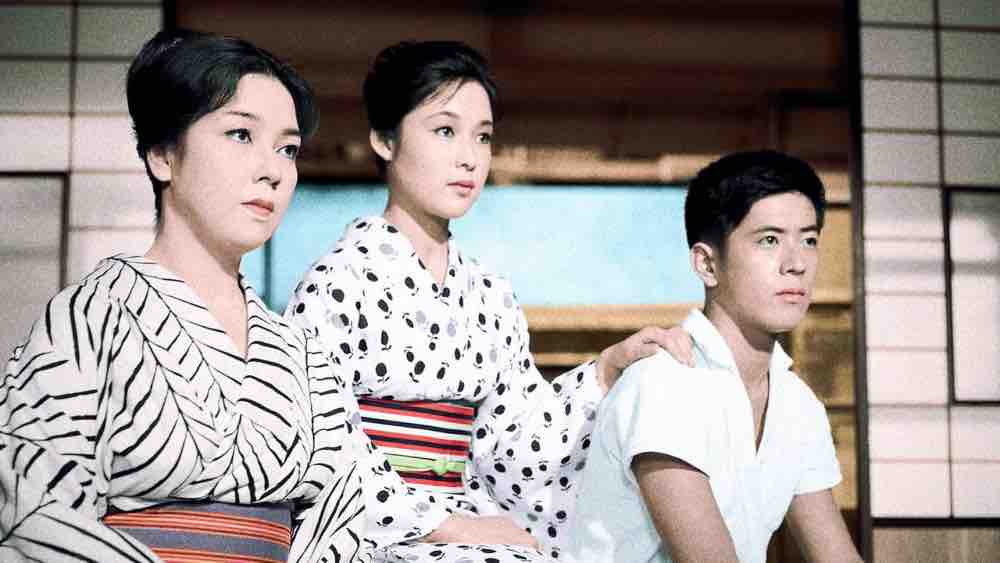
A remake of Ozu’s penultimate silent classic, A Story of Floating Weeds (1934), this tragic drama sees Ozu moving from suburban Tokyo to a serene seaside town. It opens with a traveling theatre troupe, which arrives at the town via ferry. The story largely revolves around the troupe’s master, Komajuro (played by Ganjiro Nakamura, a renowned star of Kabuki Theater). We gradually learn that the troupe is not only there to perform, but Komajuro has brought them to see his illegitimate son, Kiyoshi (Hiroshi Kawaguchi). When Komajuro’s mistress Sumiko (Machiko Kyo), learns this truth, she plans to ruin Kiyoshi’s life.
At the outset, Floating Weeds seems to be a contrived melodrama. But the quietly stunning elegance in mise-en-scène, writing, and performances turns this into a profound character ensemble piece. Ozu brings great depth to the stock characterizations, especially Kyo’s character of a jilted lover. Like in Tokyo Twilight, Ozu offers a thoughtful take on the dysfunctional domestic situation.
5. Early Summer (1951)
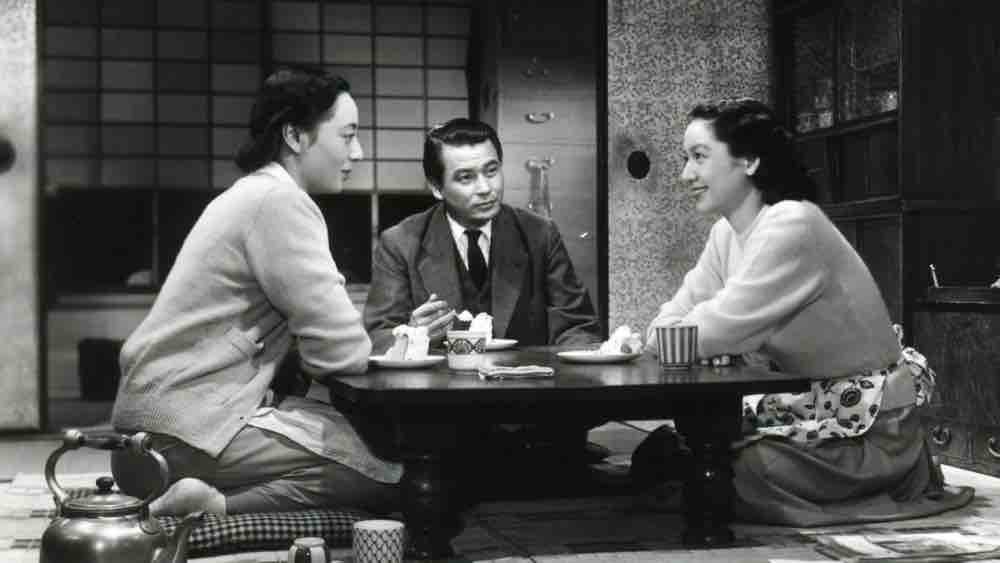
Early Summer is one of the many Yasujiro Ozu variants of the ‘getting the daughter married’ plot. Once again, Setsuko Hara plays the central character, Noriko. But the circumstances and people surrounding Noriko’s life are different. She is part of the middle-class Mamiya family, where three generations live under a single roof. The elderly parents plan to retire to their countryside home once their 28-year-old daughter Noriko is married. Chishu Ryu, who played the father role in Late Spring, is the elder brother to Noriko.
Ozu’s meditative formal style and thematic profundity strengthen the simple narrative arc. He observes a tapestry of relatable human behavior. He and his frequent screenwriter Kogo Nada’s character sketches are nuanced, from the old patriarch to the bratty kids. Early Summer also amply comments on post-war Japanese society.
Noriko’s eventual decision regarding her marriage showcases the newfound agency of women in post-war Japan.
4. Tokyo Twilight (1957)
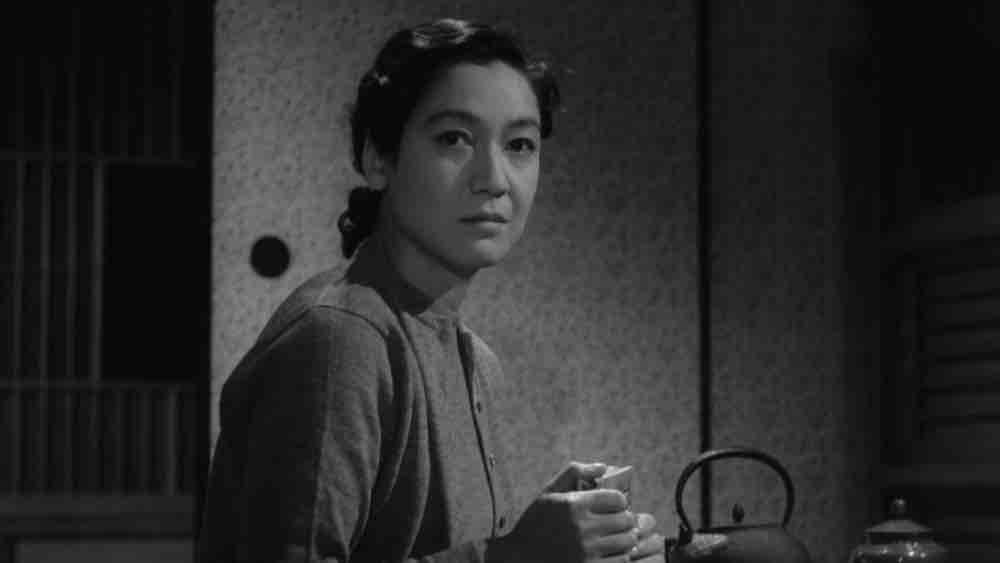
This underappreciated movie sees Ozu veer into darker territory. His pet themes of familial discord and intergenerational conflict form the crux of the story. Yet, the grim emotional realities of the characters utterly lack the hope found in his previous Ozu movies.
The movie revolves around a family of three: an elderly father and his two grown-up daughters. Ozu regular Chishu Ryu plays the bank executive’s father. Setsuko Hara plays the elder daughter, Takako. And Ineko Arima plays the younger sister Akiko.
Takako is stuck in a bad marriage and has an infant son to take care of. The sisters’ mother abandoned them in their childhood. This has largely impacted the impulsive Akiko. It’s also revealed that Akiko is pregnant and seeking money from friends for an abortion. Amidst these complications, Takako and Akiko’s mother return to their lives. The director deals with a taboo subject with honesty. His aesthetics are desolate and largely shot in nocturnal hours.
3. An Autumn Afternoon (1962)
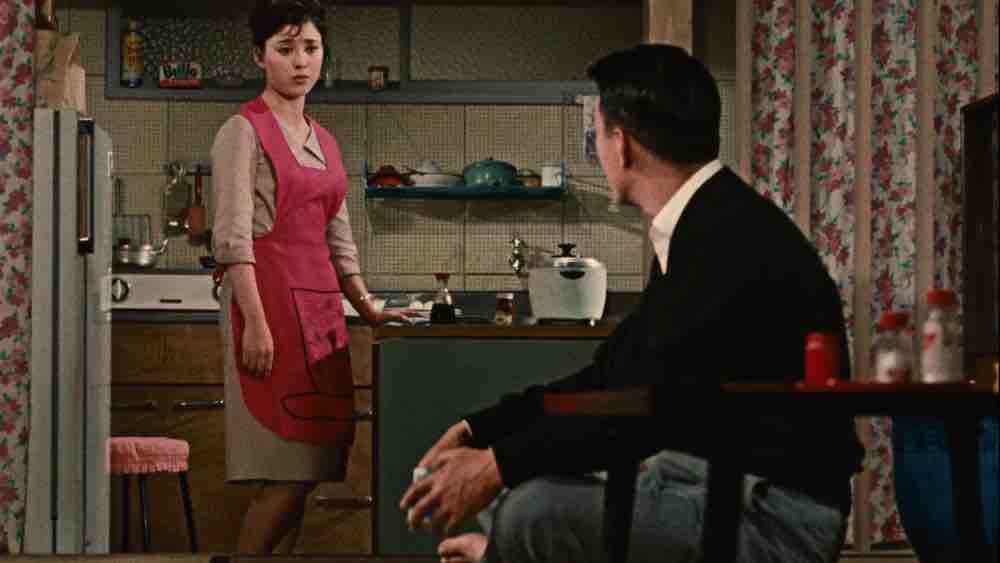
Imagine a conflict over marriage between father and daughter, alongside nuanced commentaries on the heavily and increasingly Westernized post-war Tokyo, and finally, the disintegration of the nuclear family. Ozu’s final film is yet another beautiful variation of his familiar motifs. The formidable Chishu Ryu plays the respectable aging widower, Shuhei Hirayama. Shima Iwashita plays his kind and self-sacrificing daughter, Michiko.
Other family members of the Hirayami family are the married eldest son Koichi, and the spoiled youngest son, Kazuo. Class reunion, drinking parties, an elegant meeting between lovers – we witness a series of bittersweet events that eventually leads to Michiko getting married and leaving her father’s household.
In the final shot, Hirayma sits alone in the empty kitchen corridor. An Autumn Afternoon is a moving portrait of a man accepting the inevitable changes in life with dignity. This shot gets me teary-eyed also because it was Ozu’s farewell to us. He died of throat cancer a year in December 1963.
2. Late Spring (1949)
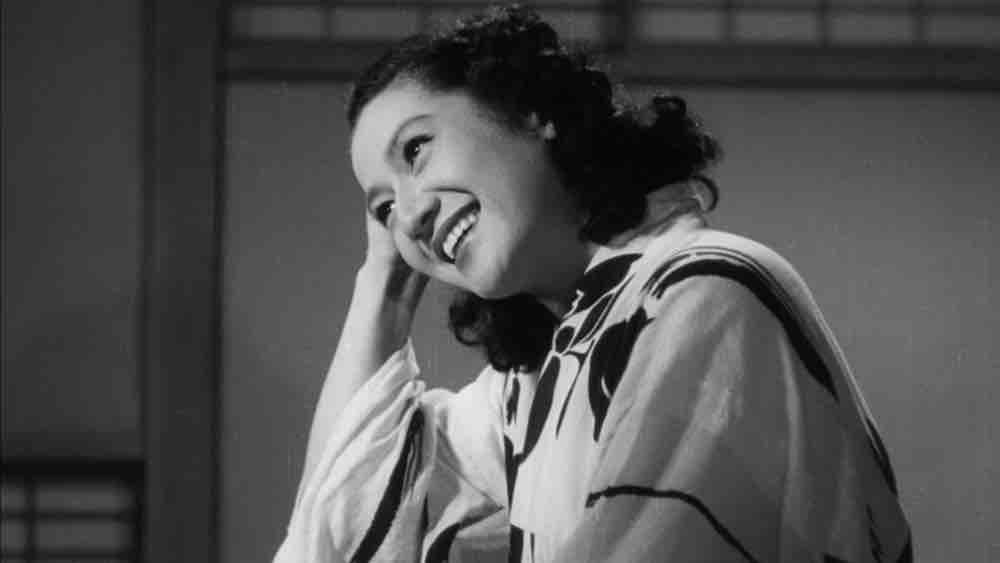
From his silent-era days, Yasujiro Ozu was gradually refining his cinematic style. Imagine the meticulous low-angle framing, static composition, unique shooting of conversations, and the ‘pillow’ shots. Ozu’s name instantly brings these images to mind. And film scholars often cite Late Spring as the film that perfectly puts together his distinct visual language. This incredible Tokyo-set drama set the tone and pace of Ozu’s post-war cinema. Moreover, the film features Ozu’s vibrant leading actress Setsuko Hara.
Hara plays 27-year old Noriko. She works and lives comfortably in the Tokyo suburbs with her widowed professor father, Shukichi (Chishu Ryu). Noriko is considered to be way past her marrying age. But she feels obligated to take care of her father and laughs off people’s attempts to get her married.
Though there’s not much else to the plot, the movie is an immensely moving portrait of the transitional phase in Noriko’s life. Ozu’s profound imagery conveys the emotional heft of the circumstances without being sentimental.
1. Tokyo Story (1953)
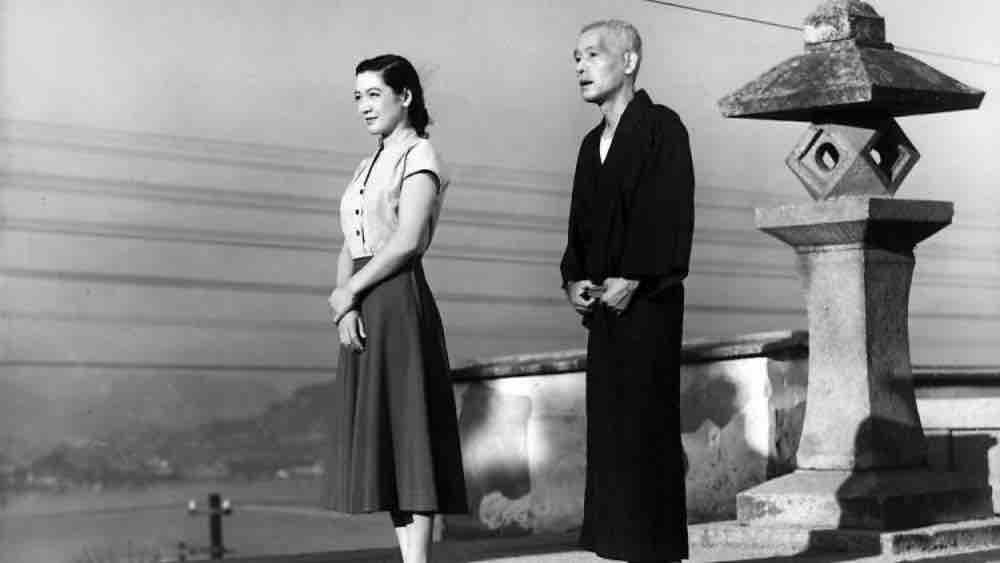
One of the greatest films ever made, Tokyo Story is a quintessential Ozu movie. Film critic Roger Ebert, who often championed the director, said “It doesn’t want to force our emotions, but to share its understanding.” Perhaps, that’s why this simple story of grandparents visiting their children and grandchildren in Tokyo hits us so hard. The director makes us understand every character’s struggles, imperfections, and dreams so well we see the world from their perspectives. He’s a master at crafting visual ironies. Even simple moments or dialogues will leave you shattered.
When Noriko (Setsuko Hara), the widowed daughter-in-law of the old couple, says how ‘life is disappointing,’ it’s hard to hold back tears. The plot of Tokyo Story has been repeated several times in films that came after. It deals with timeless themes such as intergenerational conflict, aging, loneliness, etc. Yet this universal story retains a resonance only through Ozu’s empathetic viewpoint. Chishu Ryu is magnificent as the grieving old father.
Wrapping Up
Some of Ozu’s greatest movies pondered over the circularity of life. He was born on December 12, 1903, and 60 years later, died the same day. Predominantly set in pre-war and post-war Tokyo, his works largely portrayed the life of the lower and upper-middle-class Japanese. Yet, the master’s majestic works cannot be dismissed as domestic dramas. He visualized the conflicts and doubts we all face in our lives and closely observed the human experience through the transitory phases of life. It’s why Ozu’s works are timeless and will hopefully be cherished as long as humanity thrives.

